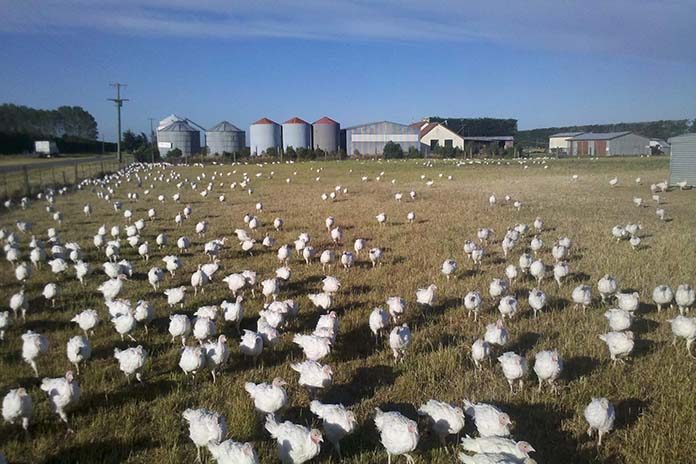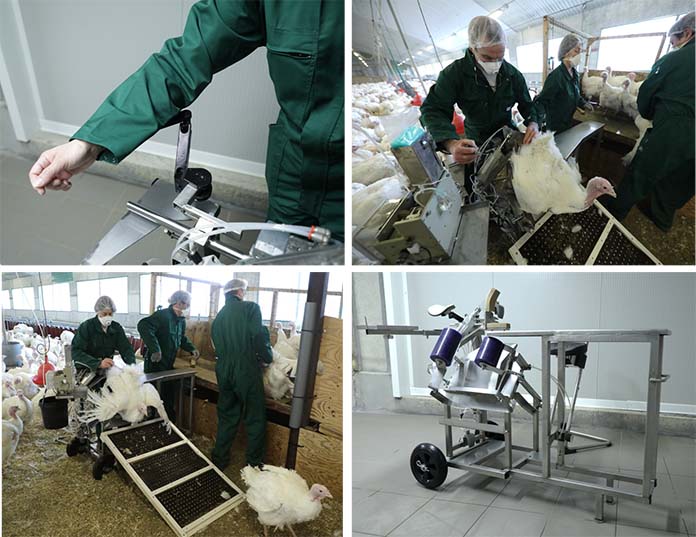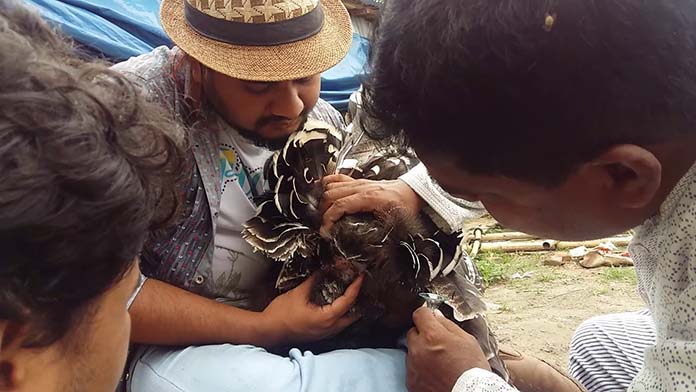
Following specific procedures to increase hen fertility will not eliminate drops in fertility, but it may also reduce the need to trouble-shoot breeder flocks.
Artificial insemination (AI), the foundation of modern day turkey breeding, was first developed in 1937 at the Bureau of Animal Industry (now the Agricultural Research Service, US Department of Agriculture) by W. Burrows and J. Quinn. The procedure consists of two-steps: first, the semen is collected from the tom and second, the semen is inseminated into the hen. What may transpire between collection and insemination, referred to as semen handling (semen transport, dilution, evaluation, and storage) is dependent on the goals of the breeder company and the capabilities of the farm staff. Farm managers and their crews can sense when something is not right within a few minutes of entering a hen or tom barn. Generally, the problem is identified and subsequently corrected. However, when the farm and hatchery managers learn from the home office that candling fertility goals are not being reached, the problem is more complicated. One of the first questions that must be asked is if the low candling fertility is a true fertility problem or an early embryonic mortality issue. Fortunately, this is a relatively easy question to answer if the hatchery does clear egg breakouts. If the clear eggs are not fertilized (no evidence of embryo development), it is a breeder farm problem. If there are signs of any embryo development in the clear eggs, the problem is not the breeder farm but most likely issues with egg handling or incubation conditions.

Before describing how to find the cause or causes of a fertility issue, it’s better to begin by emphasizing the benefits of using standard operating procedures (SOPs) as a farm management tool. A SOP is a set of step-by-step instructions created to guide workers in carrying out routine tasks and technical operations. The purpose of each SOP is to achieve efficiency, quality output, and uniformity of performance, while reducing miscommunications and operation variability.
The SOPs provided to the work-force must be written so it is clearly understood by those performing the tasks described. It will be necessary to take the time to train crew members in their assigned tasks and responsibilities and then follow-up periodically by observing the crew in action. The collective ability of all farm crews to follow the SOPs is crucial if any valid comparisons are to be made with the data collected between farms. If doing packed cell volumes to estimate sperm concentration and one farm lab centrifuges semen for 3 min one day and 10 min another day, how repeatable will sperm concentration data be for that farm on a week to week? Consistency by crew members in following the SOPs will result in a more efficient operation and less time spent trouble-shooting the breeder farms. Sustained high hen fertility begins with good quality semen and that, figuratively and literally, is in the hands of your semen collectors.
When trouble-shooting the tom barn, note how the toms are handled, the intensity and frequency of the cloacal strokes (the squeeze of the cloacal region to express semen), and the quality of the semen being aspirated into the collection vial. The semen collector should have adequate light directed at the tom’s cloaca in order to quickly differentiate clean, pearly white semen from discolored or soiled semen. Particular attention should be given to inexperienced collector as they will need to be coached at regular intervals. However, after some period of time if the new semen collector is not able to consistently collect good quality semen look for a replacement. Again optimizing hen fertility levels begins with good quality semen.

Semen handling may include semen transport, dilution, evaluation, and semen storage. As noted previously, any variation in semen handling protocols will lead to variation in week-to-week data on a particular farm as well as in farm-to-farm comparisons. This is particularly applicable to the dilution and evaluation of semen samples. When observing these procedures, check that the semen is thoroughly mixed with the diluent before beginning its evaluation. While using a pipettor to transfer semen to a spectrophotometer cuvette is not a difficult task, it is a precision tool and correct technique must be followed to achieve accurate and repeatable readings. Is the semen thoroughly mixed again before a sample is withdrawn? Is tissue paper used to remove any semen on the outside wall of the pipette tip? Is the semen aspirated into the pipette tip free of bubbles and debris? These checks take less than 10 seconds to perform and will lead to more accur ate and consistent data.
When handling semen, no procedure should be overlooked during trouble- shooting. Are the surfaces of the tubes and vials making contact with semen dry and clean? If the diluted semen is being stored in a semen agitator are the target temperature and the revolutions per minute of the shaker being maintained for the duration of the storage period? Whether a contracted AI crew or an in-house crew, the expectations of the breeder company with regard to the movement and handling of the hens (and toms) need to be clearly stated in an SOP and understood by the crew members. Rough handling of the hens by the chasers and catchers, or by the inseminator during both the cloacal breaking (exteriorizing the vagina) and hen release may stress the hens and possible impact egg production and shell quality. Watch how the breakers and inseminator coordinate their movements: is the inseminator ejecting the semen as the breaker releases pressure on the cloaca? The semen should be drawn into the vagina. If the crew observe semen on the rim of the vagina after the breaker releases pressure on the cloaca, then it is a missed insemination and should be repeated. Examine a few semen filled straws removed directly from the semen dispenser: are the semen volumes equal? Likewise, closely examine several discarded straws a few minutes after they have been used and look for residual semen in the straw. Estimate the residual volume of semen in the discarded straw. If more than 5% -10% of the original semen volume remains in the used straws most likely the inseminating gun is not be functioning in an optimal manner. The insemination gun should be checked for debris obstructing the semen expulsion mechanism. Also examine the seals and gaskets and replace if necessary.
The above are just some suggestions managers may wish to follow when hen fertility levels do not meet target goals. Observing crews in action and accurate and timely record keeping should be routine. Following these procedures will not eliminate drops in hen fertility, but they just may reduce the need to trouble-shoot breeder flocks.
From the Proceedings of the Midwest Poultry Federation Conference

















